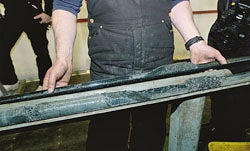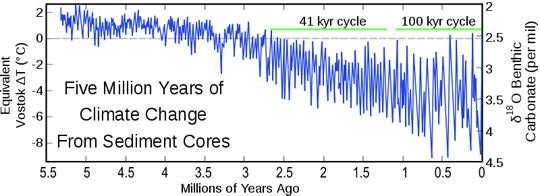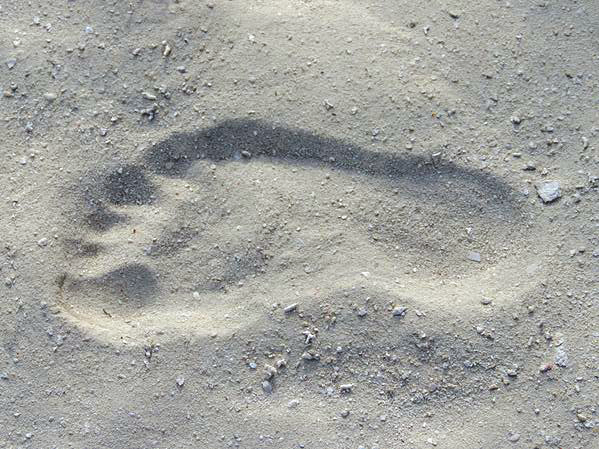
How can we tell when climate changed?
Climate change may have been a driver of human evolution, so we need to know exactly when the Earth’s climate changed. Luckily there are many ways to do this.
Digging deep in the deep sea

A large ship coasts through the Red Sea, a narrow strip of water between Africa and the Arabian Peninsula. Although it is almost midnight, scientists are awake and busy on the ship’s deck. They’re pulling wet mud, or sediment, out of a large tube they’ve just brought up from the ocean floor. These scientists aren’t interested in the ocean. They want to know about the ancient climates our ancestors lived in millions of years ago.
Some of our records of climate change come from deep-sea cores, which are collected by drilling long, deep holes into the ocean floor to collect sediment. The sediment collected in these cores holds clues that can be used to reconstruct the climate over the last few million years. One of the most common clues is the ratio of two oxygen isotopes—O18 and O16. These are collected from the skeletons of tiny organisms called foraminifera. O18 is heavier than O16, so O16 evaporates from the ocean much more rapidly during cool periods in Earth’s history. So, the more O18 in a deep-sea core, the cooler the climate was.
The O18 record shows that climate has become generally cooler over the last 5.5 million years. It has become much more variable too, swinging between very cold and very warm periods over thousands of years, which is pretty fast. These are the so-called Ice Ages.

Looking to the lakes
The one problem with deep-sea cores is that they record climate change at big scales, like the climate of the entire Earth. So, if we want to know how climates changed in East Africa, where most fossil hominins are found, we need a more local record.
Luckily, we have one—lake cores. Just like deep-sea cores, lake cores record climate history over thousands or millions of years. They contain much more than foraminifera, too. Lake cores have pollen, which shows us what plants lived around the lake. They also have charcoal, which can tell us how common and how big fires in the area were. Plus, lake cores tell us when the lake expanded and shrunk as rainfall changed.
Be Part of
Ask An Anthropologist
By volunteering, or simply sending us feedback on the site. Scientists, teachers, writers, illustrators, and translators are all important to the program. If you are interested in helping with the website we have a volunteers page to get the process started.

